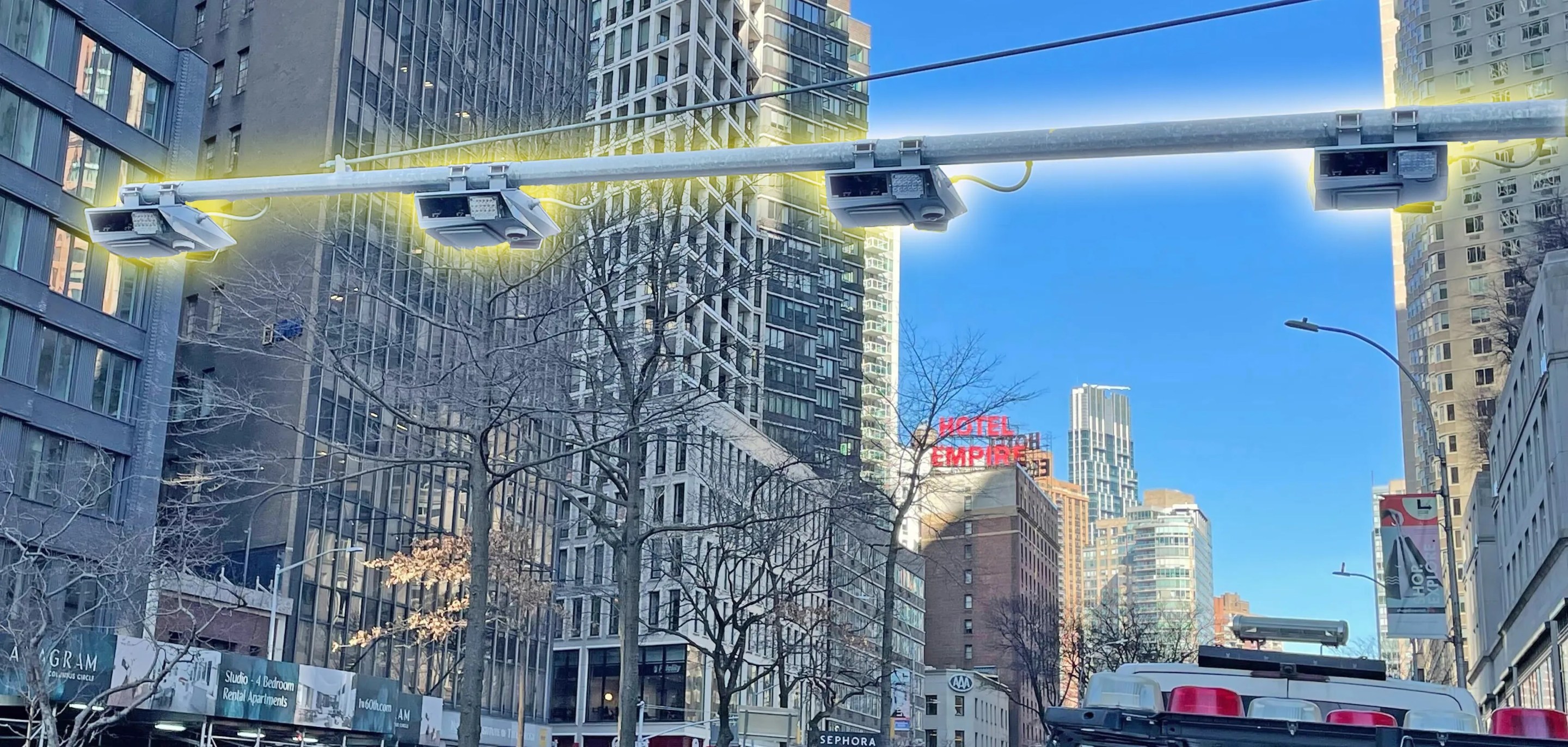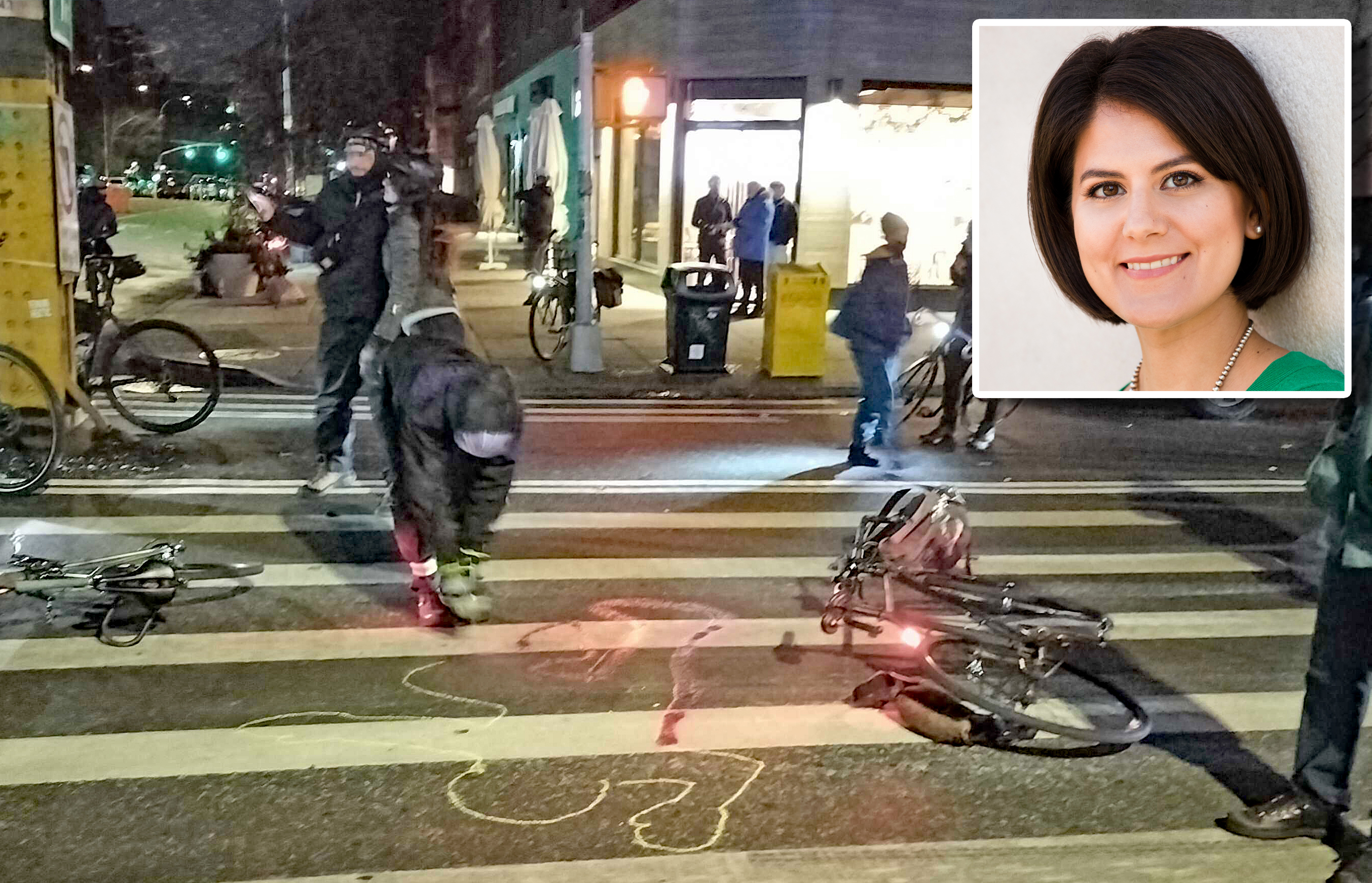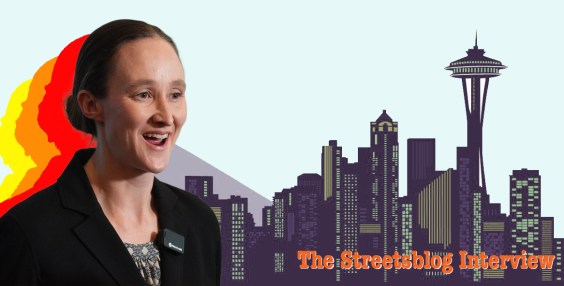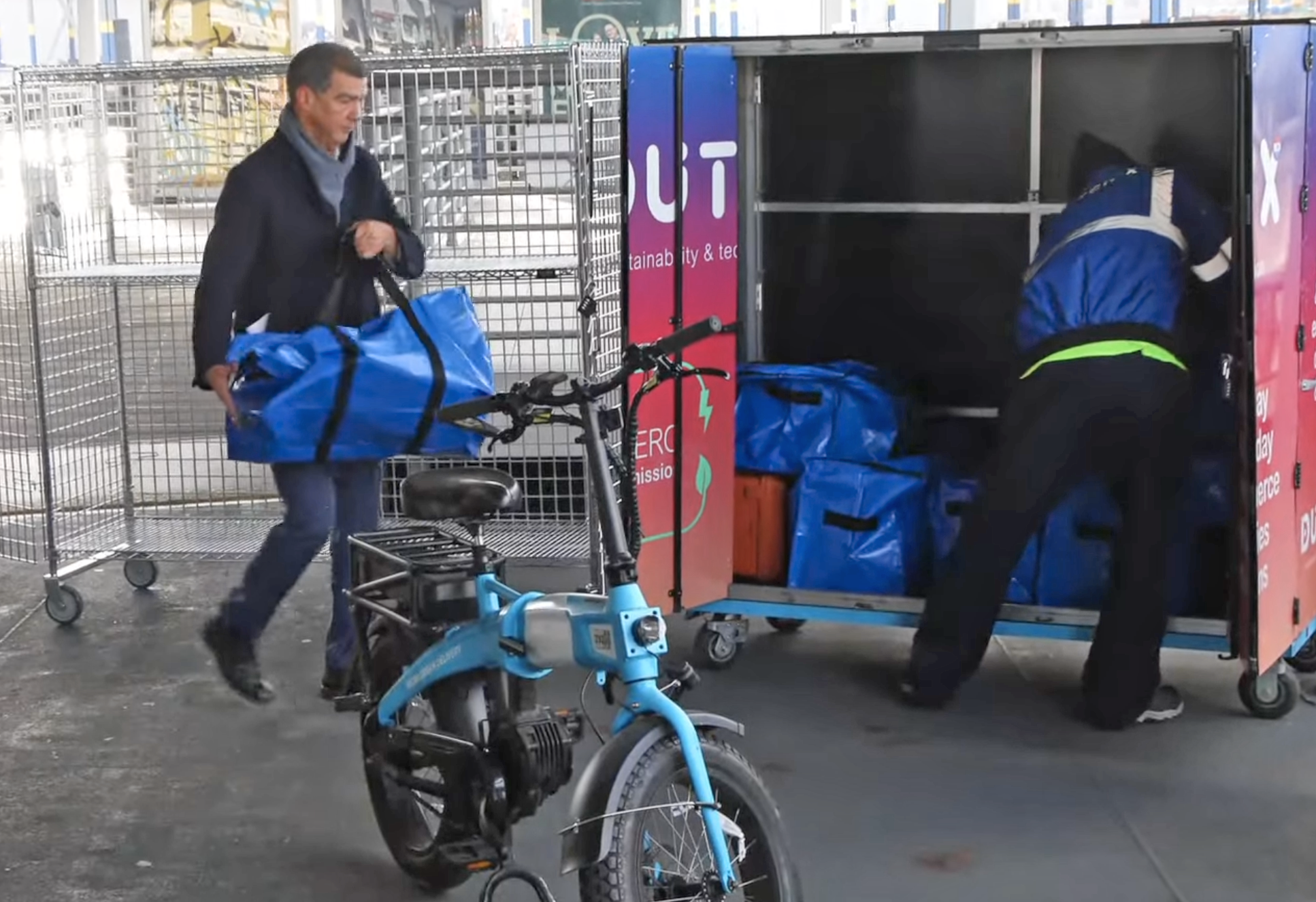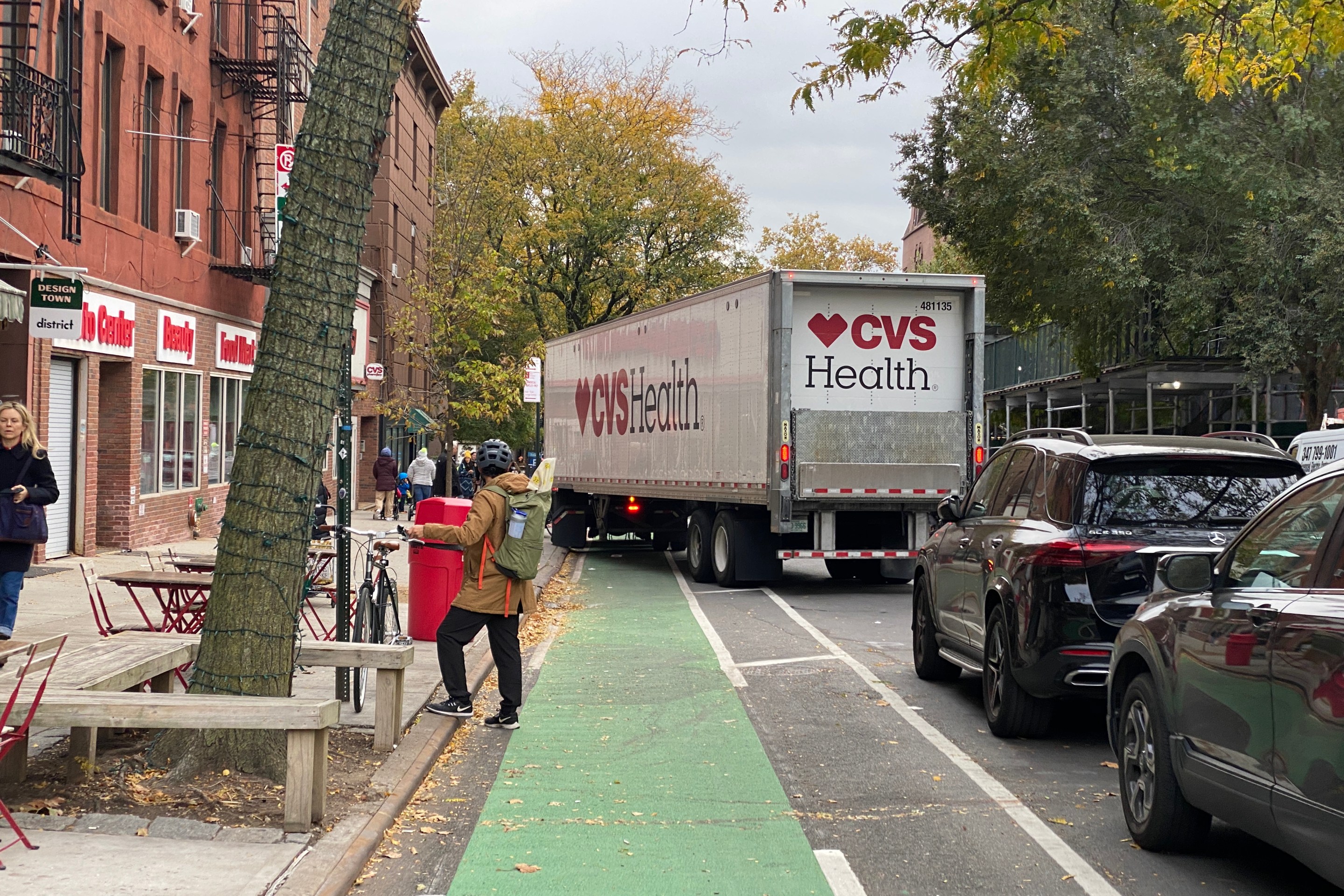Editor's note: Streetsblog initially published this story in May 2024, when congestion pricing was scheduled to start at $15 on June 30. Since then, Gov. Hochul paused the toll plan only to launch it again on Jan. 5 with a $9 base fare. We are republishing it now that the toll is officially in effect.
In early March, my partner of five years received a cancer diagnosis. Needless to say, we did not expect this terrifying news. Thankfully, her cancer, staged at IIIC, is considered curable, but requires multiple weeks of chemotherapy and radiation to treat — a grueling and physically draining medical process — which means almost daily travel between Brooklyn and Manhattan for treatment.
As we navigated the initial trips back and forth, I contemplated the impact of local transportation policy on people facing serious illness, who depend on their commutes being as short and reliable as possible. One thing became clear — congestion pricing will help us and others who need to get to critical medical appointments in Manhattan.

Like most New Yorkers, we do not own a personal vehicle. This means that transportation to and from treatment happens via public transportation, for-hire vehicles or enlisting car-owning friends and family to drive us. No matter what transportation we use, congestion pricing will help when it launches June 30.
Opponents of congestion pricing often cite cancer patients in their arguments against the toll. Those arguments make even less sense to me now. A radiation doctor at Memorial Sloan Kettering Cancer Center recently went as far as to call the toll a “tax on those who have cancer.” This is grossly misleading — not only because it co-opts the voice of all cancer patients — but because the fee is not specific to cancer patients (everybody will pay), and will bring them tangible benefits that will improve their quality of life and access to treatment.
The subway ride takes us between 50 minutes and 70 minutes each way. More frequent service and fewer delays caused by outdated signals would make this trip much more reliable and closer to 50 minutes, rather than over an hour. We often stand on the platform as multiple overcrowded trains arrive before we can actually board one. The MTA is increasing service on several subway lines — including ours — leading up to day one of congestion pricing, meaning relief and real benefits are in sight for us and the millions of daily subway riders. Congestion pricing revenue will also fund MTA capital improvements, which will reduce signal delays, allow trains to run closer together and increase accessibility at many stations.
Traveling via for-hire vehicle services such as Uber and Lyft is also frustrating. Traffic speeds in the future tolling zone move abysmally slow, having decreased by 23 percent since 2010. By car, the trip to treatment takes anywhere from 40 minutes to an hour and a half depending on traffic. This is periodically necessary when the subway ride is not feasible due to my partner’s physical condition and nobody is available to drive us. If congestion pricing brings the expected 17 percent reduction in traffic — or more, as seen in London (20 percent reduction), Stockholm (25 percent reduction) or Singapore (43 percent reduction) — that is a welcome improvement for days when we need to travel this way.
Individuals who cannot afford for-hire vehicles use public transportation regardless of how bad they feel physically, and car-free New Yorkers who rely on public transit tend to earn significantly less than car-owners. This is all the more reason to support congestion pricing, which will fund sorely needed improvements to the subway system.
Congestion pricing has similar benefits if we ride with friends or family in a car. I am extremely grateful to those in my circle who volunteer their time to take us to critical appointments, cutting our travel cost from the whopping $100 for a for-hire car to the mere $15 congestion fee. The fee — only slightly more than the $11.60 cost for the four subway fares we would otherwise use — means faster, more seamless travel in the congestion zone for those who absolutely need to drive. The reduction in traffic will make it much easier to arrive at appointments on time and consistently without delays. The $15 congestion fee is also tax deductible as a medical expense, along with any other transportation costs.
Critics might argue this situation proves why personal vehicles are necessary, but the finances paint a different picture. The total cost to take a for-hire vehicle back and forth to treatment every day — which again, we only require intermittently — is around $4,000. The cost to buy and maintain a personal vehicle — around $25,000 for the average used car plus $6,000 annually in other costs — dwarf even that. That does not account for the 107 hours annually that the average New York City driver spends looking for parking. Nor the cost of the countless negative externalities that result from a car-centric lifestyle, including sleep disruptions, weight gain and worsened mental health.
I am the helper, not the person enduring the treatments, and I would never presume what's best for any patient. Everyone’s financial situation differs. But for my family, paying a congestion pricing toll that will make the trip faster and more reliable — whether we are on public transportation or in a car — just makes sense.
I look forward to congestion pricing’s launch at the end of June, and anxiously await the benefits it will provide my partner and me.
As the date draws closer, I urge the MTA and city and state officials to double down: Public transportation needs to improve in tandem with the launch of the toll, and policymakers must utilize every tool at their disposal to do that effectively.
